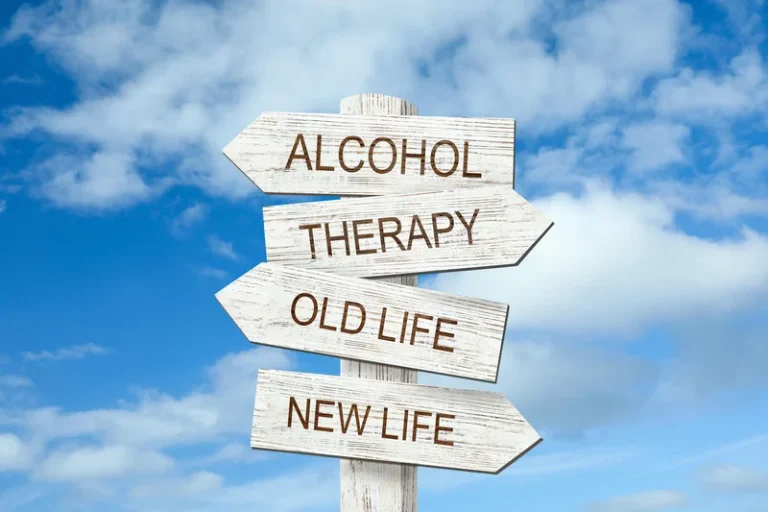Categoria: Sober living
6 Ways Adult Children of Alcoholics Struggle Later in Life
Because he is a member of a support group that stresses the importance of anonymity at the public level, he does not use his photograph or his real name on this website. For example, if you couldn’t depend on your parent to feed you breakfast or take you to school in the morning, you may have become self-reliant early on. As a result, Peifer says you could have difficulty accepting love, nurturing, and care from partners, friends, or others later in life. Below, you’ll find seven potential ways a parent’s AUD can affect you as an adult, along with some guidance on seeking support. Yet while your parent didn’t choose to have AUD, their alcohol use can still affect you, particularly if they never get support or treatment.
Post-Traumatic Stress Disorder (PTSD)
Although people with AUD aren’t “bad” people (or “bad” parents), their alcohol use can create a home environment not suited for a child. A 2021 study shows that parental alcohol abuse significantly increases the chance of having a dysfunctional family environment. As painful as it is for someone to live with alcohol use disorder, they aren’t the only ones affected. Their family members — especially children — are usually impacted by alcohol use, too. And even when these children become adults, it may continue to be a challenge to deal with their parent’s addiction and its lasting effects.
Treatment Options
They might also face challenges in setting and achieving career goals due to low self-esteem or lack of support. This lack of emotional support can lead to feelings of abandonment, loneliness and worthlessness in children. This emotional turmoil can result in emotional dysregulation, low self-esteem and difficulty managing emotions. They may struggle with feelings of guilt and shame about their family situation. Growing up in an alcoholic household predisposes the children to maladaptive behaviors.
Online Therapy Can Help
Most of the information on the developmental pathways leading to alcoholism comes from retrospective or cross-sectional studies. Retrospective studies gather pertinent information about the subjects’ past based primarily on self-reports by the study participants. This information includes, for example, the age at which the subjects began to drink, the level and frequency of alcohol consumption, and the presence of certain types of psychopathology (e.g., depression and antisocial personality disorder [ASPD]). Although retrospective studies have yielded important information, the interpretation of these data often is limited because the subjects’ recall may not always be accurate. At least in some alcoholic subjects, these recall problems may be caused or aggravated by memory deficits resulting from long-term alcohol abuse. To date, existing research indicates that care should be taken when making generalizations about the psychological characteristics of COA’s.
These therapies teach skills that can help people manage bipolar disorder, including skills for maintaining routines, enhancing emotion regulation, and improving social interactions. Several types of medication can help treat https://sober-house.net/ symptoms of bipolar disorder. They may need to try different types of medication to find the one that works best for them. Some children may need more than one type of medication because their symptoms are complex.
- Whether a child’s parent is receiving addiction treatment for alcohol addiction or not, it’s important to offer a safe space for the child.
- Most of the adult children of alcoholics who I know underestimate the effects of being raised in an alcoholic family.
- Children and teens can work with their health care provider to develop a treatment plan to help them manage their symptoms and improve their quality of life.
Trauma Symptoms of Adult Children of Alcoholics
These characteristics are viewed as descriptive by most people, COA and non-COA alike. It is vital, then, not to confuse this perceived descriptiveness with scientifically valid descriptions. Despite a common interest a complete guide to ketamine withdrawal & addiction in COA’s, the literature based on clinicians’ experiences and the literature from the community of researchers have not overlapped to any great extent and have provided two distinct bodies of knowledge.
Growing up in an alcoholic household can be a lonely, scary and confusing experience, and research shows it impacts nearly every aspect of a child’s existence. The solution for adult children is found in the relationship between a person’s inner child and parent, which are two different sides of self. External messages that you’re bad, crazy, and unlovable become internalized. You’re incredibly hard on yourself and struggle to forgive or love yourself. During childhood, you came to believe that you’re fundamentally flawed, and the cause of the family dysfunction. Perhaps to avoid criticism or the anger of their parent with AUD, many children tend to become super-responsible or perfectionistic overachievers or workaholics.
Adult children of alcoholics struggled in many areas and needed all the support they could get. Clinicians have described a number of personality variables purported to characterize COA’s and to result in long-term adjustment difficulties. Many personality descriptors have been applied to COA’s, especially to adult COA’s (or ACOA’s). These descriptors appear to be embraced by many clinicians as well as by numerous people who have grown up with alcoholic parents.
Once these two aspects of self—the inner parent and child—begin to work together, a person can discover a new wholeness within. The adult child in recovery can observe and respond to the conflict, emptiness mdma and the brain and loneliness that stem from a parent’s substance abuse, and they can mourn the unchangeable past. They can own their truth, grieve their losses and become accountable for how they live their life today.
Data suggest that as people become increasingly alcohol dependent, they become more introverted (Sher and Trull 1994). Consequently, it is possible that the failure to find reliable differences between COA’s and non-COA’s on extraversion/sociability stems, in part, from failure to control for alcohol dependence that could mask this trait. Alternatively, the seeming sociability of some prealcoholics might be more a reflection of disinhibition rather than true sociability (Tarter 1988). It is typical for a parent to tell children to hide their drinking problem. Children learn it is alright to lie for a parent, and the line between right and wrong begins to blur. If a parent allows a child to skip school to aid their alcohol abuse, education for the child becomes less critical.
What Is Alcoholism? Symptoms, Causes, Diagnosis, Treatment, and Prevention
We’ll be able to tell you if your insurance provider is in network with an American Addiction Centers treatment facility. Just because someone may appear to be “sleeping it off,” they can still be in danger of serious harm from alcohol poisoning. Call 911 immediately if you suspect someone may be in danger of an alcohol overdose. Thanks to generous benefactors, your gift today can have 5X the impact to advance AI innovation at Mayo Clinic.
How Is Alcohol Use Disorder Diagnosed?
- If you feel that you sometimes drink too much alcohol, or your drinking is causing problems, or if your family is concerned about your drinking, talk with your health care provider.
- When you drink too much, your liver has a harder time filtering the alcohol and other toxins from your bloodstream.
- Too much alcohol affects your speech, muscle coordination and vital centers of your brain.
- Talk to your healthcare provider if you’re under stress and think you may be at risk for relapse.
Although the exact cause of alcohol use disorder is unknown, there are certain factors that may increase your risk for developing this disease. If your pattern of drinking results in repeated significant distress and problems functioning in your daily life, you likely have alcohol use disorder. However, even a mild disorder can escalate and lead to serious problems, so early treatment is important. Unhealthy alcohol use includes any alcohol use that puts your health or safety at risk or causes other alcohol-related problems. It also includes binge drinking — a pattern of drinking where a male has five or more drinks within two hours or a female has at least four drinks within two hours. Not only does AUD affect the health of the person with the disease, but it also impacts the lives of those around them.
If you think you need help with alcohol use, talk to your doctor. They can assess whether you have a risky drinking pattern, evaluate your overall health, help create a treatment plan, and refer you to programs or other healthcare providers if necessary. The brain experiences the effects of alcohol right away, resulting in changes in mood, behavior, and judgment. The more alcohol you drink, the higher your blood alcohol levels and the greater your level of alcohol intoxication. Behavioral treatments—also known as alcohol counseling, or talk therapy, and provided by licensed therapists—are aimed at changing drinking behavior.
How can I prevent alcohol use disorder?
Alcohol use disorder is diagnosed on the basis of criteria defined in the fifth edition of the Diagnostic and Statistical Manual of Mental Disorders (DSM-5). The DSM is a guide that describes and classifies mental disorders, published and updated regularly by the American Psychiatric Association and used as a tool by medical professionals. The more familiar term “alcoholism” may be used to describe a severe form of AUD, but physicians, researchers, and others in the medical community tend not to use the word.
Steps to Treating Alcohol Use Disorder
They’ll recommend treatments and resources to help you recover from alcohol use disorder. Many people with AUD do recover, but setbacks are common among people in treatment. Seeking professional help early can prevent a return to drinking. Behavioral therapies can help people develop skills to avoid and overcome triggers, such as stress, that might lead to drinking. Medications also can help deter drinking during times when individuals may be at greater risk of a return to drinking (e.g., divorce, death of a family member).
National Institute on Alcohol Abuse and Alcoholism (NIAAA)
If you or a loved one is struggling with AUD, make an appointment with a primary care provider music therapy for addiction such as a medical doctor or nurse practitioner. People with severe AUD who have used alcohol long-term may experience severe withdrawal symptoms that require medical evaluation and treatment. A healthcare provider can evaluate the AUD severity and its health impacts, refer you to specialists, and determine the appropriate treatment.
Studies show most people can reduce how much they drink or stop drinking entirely. A BAC of 0.09% to 0.25% causes lethargy, sedation, balance problems and blurred vision. A BAC of 0.18% to 0.30% causes profound confusion, impaired speech (e.g. slurred speech), staggering, dizziness and vomiting.
Don’t forget to take care of yourself, too; consider seeking out your systems of support or even medical help if you’re having trouble. The American Medical Association recommends a two-drink daily limit for people assigned male at birth (AMAB). Heavy drinking in this population is five or more drinks in one day or 15 or more drinks in a week. People assigned female at birth (AFAB) should limit drinking to one drink a day. Heavy drinking in this population is four or more drinks a day or eight drinks a week.
People with severe or moderate alcohol use disorder who suddenly stop drinking could develop delirium tremens (DT). It can be life-threatening, causing serious medical issues like seizures and hallucinations that require immediate medical care. Mutual-support groups provide peer support for stopping or reducing drinking. Group meetings drinking when bored are available in most communities at low or no cost, and at convenient times and locations—including an increasing presence online. This means they can be especially helpful to individuals at risk for relapse to drinking. Combined with medications and behavioral treatment provided by health care professionals, mutual-support groups can offer a valuable added layer of support.
Working to stop alcohol use to improve quality of life is the main treatment goal. The two manuals use similar but not identical nomenclature to classify alcohol problems. Wernicke-Korsakoff syndrome is a degenerative brain disorder that causes mental confusion, vision problems, lack of coordination, and memory problems, among other symptoms. Drinking heavily over long periods of time may lead to changes in how the brain functions, from memory slips to more debilitating conditions.
Excessive drinking or an alcohol use disorder can be successfully managed with treatments, such as therapy and medication, to help you to modify your behaviors and help your brain adapt to the absence of alcohol. Your doctor or healthcare provider can diagnose alcohol use disorder. They’ll do a physical exam and ask you questions about your drinking habits.
Under the direction of licensed therapists or counselors, behavioral therapies involve psychological strategies to modify drinking behaviors. The therapy goals are to develop the skills needed to manage your habits, build whats in whippits social support, set and work toward realistic goals, and deal with or avoid things that trigger drinking. Here’s some information to help you get ready for your appointment, and what to expect from your health care provider or mental health provider. You’re likely to start by seeing your primary health care provider. If your provider suspects that you have a problem with alcohol, you may be referred to a mental health provider.
The Missing Piece: The Spiritual Malady Residential Recovery Program & Addiction Transitional Sober Living Home

One is a mobilization response to threat where we can prejudge, react, attack, argue, criticize, blame, and experience interpersonal disconnections. This is frequently referred to as “fight and flight” physiology. The other threat phenotype is one of relative immobilization where we retreat, ruminate, isolate, dissociate and experience bodily and spiritual disconnections. This is frequently referred to as “falter (or freeze) and faint” physiology.
Complicated Grief, Soul Loss, and the Dark Night of the Soul
So the key here is to find a person or group of people in which you feel safe around. Feeling safe enough to open up is a crucial part of grief work. The physical allergy is the concept that once a https://ecosoberhouse.com/article/alcohol-and-headaches-why-does-alcohol-cause-migraines/ drink or a drug enters the body of an individual with alcohol use disorder (AUD) or substance use disorder (SUD), they cannot stop. Now, the inability to stop drinking or using is the allergy part.
Types of Spiritual Healing
We dwell on that thought too long, and our desire eventually gives birth to action. And once we take action and put that substance in our system – whether its alcohol, drugs, sugar, or whatever—it sets off a physical craving for more of that substance or activity and we’re caught in a cycle. Although the idea of the spiritual malady came to me through reading about Alcoholics Anonymous, I believe it is a concept any person can connect with whether or not they suffer from addiction. This allows me to do a quick inventory of my negative emotions and a prayer to God to have them removed.
Tips for Healing Emotional Wounds
This will allow them to undergo the required shift in thought that will free them from their addiction. As a result of this thought process, the spiritual illness spiritual malady they’re up against is at the core of their addiction. Also, they cannot fathom how other people manage to deal with crises in life – even when they have it worse.
- Once a person with AUD takes an alcoholic drink, the body craves more on a physical level.
- I am also starting to be creative again in hopes that will help.
- Clinicians working with trauma victims should be aware of the possible relevance of spiritual struggle in clients’ interpretation of the event and subsequent recovery.

“Other trauma” refers to other events that were life threatening, caused serious injury or were highly distressing or disturbing. In other words, the mental and physical factors of addictive and compulsive behaviors are put into remission AFTER the “spiritual malady” is overcome. But there is more to our threat load than the physical and spiritual. We have the subawareness shadow part of our physiology that tends towards a defense bias and trigger.
- Admitting that you need help is not a sign of weakness, it’s a sign of strength.
- A really effective tool for building that list is to ask ourselves questions.
- Some causes of a spiritual malady may include a disconnection from one’s spiritual values or beliefs, unresolved emotional trauma, feeling stuck or unfulfilled in one’s career or personal life, and a lack of self-awareness.
- There is no church you must attend or strict practices you must adhere to in organized worship of said higher power, it is a completely individual and personal experience.
Trauma and PTSD Symptoms: Does Spiritual Struggle Mediate the Link?

The mature way to to access, identfiy and label how one is feeling and use this information to reasonably express how one is feeling. They are suppose the tell the fronts of our brains to find words for our feelings. Not to tell the bottom of our brains to fight back or run or freeze. Also we need to be aware what we project on to other alcoholics is the same thing as they project on to use and sometimes we project if back. I can manage my spiritual malady or emotional dysfunction, I have the tools to do so.


Tap into your inner source of power and keep moving forward
Addressing the Three-Fold Illness and Other Ways to Heal in Glenwood Springs
The pros and cons of mammograms should be explained to women, study says : Shots Health News : NPR
Alcohol can alter retinoid metabolism by inhibiting the oxidation of vitamin A to retinoic acid [21]. Alcohol increases CYP2E1 activity (Section 3.2) which also functions to metabolise retinoic acid resulting in the production of toxic metabolites [21]. This https://sober-home.org/ increased toxicity of retinoids may explain the observation of excess lung cancer risk in smokers who took β-carotene supplements and consumed 11 g or more of ethanol per day in the α-tocopherol, β-carotene cancer prevention study (ATBC trial) study [21].
Animal Models
In contrast to the extensive studies involving T cells in anti-tumor immunity, the knowledge of B cells in anti-tumor immune responses are limited and controversial. One of the studies reported that B cells enhanced T cell mediated anti-tumor immunity by producing anti-tumor antibody and presenting tumor-antigen to T cells [159]. They also showed that depletion of B cells enhanced B16 melanoma metastasis to the lung by inhibiting CD8+ T cell proliferation and Th1 cytokine production. On contrary, there are evidences suggesting that B-cell depletion could therapeutically enhance anti-tumor immune responses by decreasing IL-10 production from B cells [160].
- Different rodent models are well known and have been used over the years to study cancer pathogenesis.
- “The high prevalence of cancer survivors engaged in hazardous drinking highlights the need for immediate interventions,” they wrote.
- The study estimated that, in 2019, 40% of the nearly 1.8 million cancers in adults 30 and older were attributable to “potentially modifiable risk factors.” It examined 30 types of cancer and excluded non-melanoma skin cancers.
- “Currently, only 16 of 46 countries in sub-Saharan Africa have national alcohol strategies,” says Rumgay.
- This information is useful to corroborate existing evidence, develop chemoprevention strategies, and could improve cancer therapy, but there is already a wealth of evidence to support the need for further alcohol control and cancer prevention efforts.
- These analyses found that tobacco use had a substantial modifying effect not only on the alcohol-related risks for lung and bladder cancer but also on the risk for laryngeal cancer.
Alcohol use during and after cancer treatment
However, it also acknowledges public concerns about these products being used to increase awareness and acceptance of alcohol brands among young people. Mr. Booth said it’s clear more needs to be done to protect children and young people from exposure to zero alcohol marketing to prevent future alcohol harm. Most women have absorbed the widely broadcast message that screening mammography saves lives by the time they enter middle age. But many remain unaware of the costs of routine screening in their 40s — in false-positive results, unnecessary biopsies, anxiety and debilitating treatment for tumors that left alone would do no harm. After a nationally representative sample of U.S. women between the ages of 39 and 49 learned about the pros and cons of mammography, more than twice as many elected to wait until they turn 50 to get screened, a study released Monday in the Annals of Internal Medicine found. 3In the United States, a standard drink frequently is defined as 0.5 ounces (oz) or 14 grams of pure alcohol.
Smoking Study
The mechanisms by which alcohol consumption may decrease the risks of some cancers are not understood and may be indirect. These amounts are used by public health experts in developing health guidelines about alcohol consumption and to provide a way for people to compare the amounts of alcohol they consume. The 44-year-old actress had a clean mammogram and a negative test for cancer genes shortly before her doctor calculated her score for lifetime breast cancer risk, setting off an alarm that led to her being treated for fast-moving, aggressive breast cancer in both breasts. To date, no experimental evidence indicates that alcohol by itself can cause cancer—that is, that alcohol can act as a complete carcinogen. Over the past few decades, however, several animal studies have indicated that alcohol can have a cocarcinogenic, or cancer-promoting, effect. This means that when alcohol is administered together with other known cancer-inducing agents (i.e., carcinogens), it promotes or accelerates cancer development.
American Cancer Society officials also stressed the importance of vaccines for hepatitis B and human papillomavirus, or HPV. Hepatitis B causes liver cancer and HPV can lead to multiple types of cancer, including cervical, anal and genital cancers and cancer of the mouth and throat. “The increased risk is because of the alcohol in alcoholic beverages, not the type of beverage,” Islami said. In summary, alcohol may modulate the immune system in a fashion that may favor tumor development and progression. Unravelling the details of immune alterations caused by alcohol exposure is crucial for developing more specific anti-tumor therapeutic strategies to ameliorate immune suppression in alcoholics. Public health guidelines generally advise moderation in alcohol consumption or complete abstinence to reduce the risks of developing cancer.
Effects of Alcohol on Tumor Growth, Invasion, Metastasis, and Survival in Animal Models
Heavy drinkers who suddenly stop drinking can have physical withdrawal symptoms such as tremors, confusion, hallucinations, seizures, and other serious problems over the next few days. It does mean that heavy drinkers should talk with their health care team about the safest way to stop drinking. Drinking alcohol can also lead to oxidative stress in cells, causing them to create more reactive oxygen species (chemically reactive molecules that contain oxygen). Numerous changes need to be made to raise public awareness of the fact that drinking alcohol raises the risk of several types of cancer. There likely are additional cancers linked to drinking alcohol, Dr. Orlow says, but more well-designed studies (epidemiological and other) are needed to prove that alcohol is a contributing risk factor.
Researchers tackle liver cancer in multiple ways, including the possible development of a biomarker. “We are worried that 10 to 20 years down the road, we’re going to see a substantial increase in alcohol-related cancers,” Dr. Klein said. There have been decades of public education campaigns about the health risks of tobacco, warning labels on tobacco products, and smokefree laws. “I try to normalize asking [patients] things like, if they’re drinking, how much and how they feel it affects them,” she explained.
The World Cancer Research Fund (WCRF) also conducts classification of physical and dietary components and their potential cancerous effects as part of their Continuous Update Project. The WCRF base their conclusions on the quality of epidemiological evidence and carry out meta-analyses of the association with cancer risk. For example, in a series of case-control studies conducted in Italy, the RRs for the highest exposure levels to both risk factors were 80 for cancers of the oral cavity and pharynx, 12 for laryngeal cancer, and 18 for esophageal cancer (Franceschi et al. 1990). From a public health view, this synergism implies that over 75 percent of cancers of the upper digestive and respiratory tract in developed countries are attributable to alcohol and tobacco.
Such analyses were conducted for most cancers of the upper airways and digestive tract, as well as for lung and bladder cancer. These analyses found that tobacco use had a substantial modifying effect not only on the alcohol-related risks for lung and bladder cancer but also on the risk for laryngeal cancer. For example, when the investigators considered only studies reporting RRs not adjusted for tobacco use, the pooled RR for lung cancer at the highest level of alcohol consumption was 6.30. When they excluded such studies from the analysis and considered only studies reporting estimates adjusted for tobacco use, however, the pooled RR declined to 1.07. This finding indicates that alcohol itself only weakly increases the risk for lung cancer and that lung cancer risk primarily results from tobacco use, which is common in heavy drinkers.
However, surgical removal of the tumor-bearing leg decreased pulmonary metastasis in both ethanol-drinking and water-drinking groups. Educating the public about the cancer risk from drinking alcohol, regardless of the beverage type, is especially urgent given the increase in drinking during the COVID-19 pandemic, Dr. Klein said. The study confirmed that most American adults aren’t aware of the link between alcohol consumption and cancer.
Relationship between increasing amounts of alcohol and risk (i.e., relative risk or RR) for 14 types of cancer. The RR describes the strength of the relationship between a variable (e.g., alcohol consumption) and a disease (e.g., cancer). A RR among the people with the variable (e.g., drinkers) of greater than 1.0 indicates that the variable increases the risk for the disease. The curves shown here were obtained by fitting certain statistical models to the data from several studies (i.e., a meta-analysis). Blue dotted lines indicate 95-percent confidence intervals; that is, the range of RR that is 95 percent likely to show a true RR. The association between various levels of alcohol consumption and an increased risk of liver cancer remains difficult to interpret even with the pooled data used in this meta-analysis.
These researchers also examined the effect of ethanol in vitro on the migration of the estrogen receptor–positive T47D breast cancer cell line. The results showed that cells exposed to different concentrations of ethanol from 0.1 percent to 0.5 percent exhibited increased migration, as did cells exposed to estrogen (20 nM). The combination of estrogen and 0.5 percent resulted in higher migration than either treatment alone. The effects of alcohol consumption on cancer risk have been studied for many decades and an association with alcohol has been observed for multiple cancer sites.
This superactive ADH enzyme speeds the conversion of alcohol (ethanol) to toxic acetaldehyde. Among people of Japanese descent, those who have this form of ADH have a higher risk of pancreatic cancer than those with the more common form of ADH (30). As ROS are highly reactive, their presence can lead to lipid peroxidation producing aldehydes which can bind to DNA forming etheno-DNA adducts [29,30]. These ethe-DNA adducts, namely 1,N6-ethenodeoxyadenosine and 3,N4-ethenodeoxycytidine, are highly mutagenic as they lead to mutations in several genes involved in key cell cycle regulation and tumour suppression [21]. In 2024, the panel returned to saying that all women between the ages of 40 and 74 should be screened with mammograms every other year. Rising breast cancer rates in younger women, as well as models showing the number of lives that screening might save, especially among Black women, drove the push for earlier screening.
The risk reduction depends on several factors, including the type of cancer, the amount and duration of previous alcohol use, and other individual health factors. Research has shown that alcohol consumption is a significant risk factor for a variety of cancers. While such public policies are effective and necessary, says Dr. Amy Justice, professor of medicine and public health at Yale University, we need to go further. She agrees with the authors that the results are, if anything, an understatement of the impact of alcohol on cancer cases. And she has suggestions to reduce the burden of alcohol-related cancers that go beyond governmental action.
Those include lower risk of 10 cancers, protection against heart and kidney diseases, and reduction in systemic inflammation, according to recently published research. A new study is pointing to some specific actions you can take — and how much difference it can make. Upon analysis, researchers found that cigarette smoking was attributable to the largest percentage https://sober-home.org/adult-children-of-alcoholics-the-lasting-impact-i/ of cancer cases, at almost 20%. Hawk said the purpose of a study like this is not to shame individuals who smoke or drink or engage in other high-risk behavior, but rather to inform and educate. For example, certain ALDH variants, more common in East Asian populations, lead to a buildup of acetaldehyde, increasing the risk of esophageal cancer.
A positive association with lung cancer was only found for heavy drinkers in Bagnardi and colleagues’ meta-analysis, but this was probably due to residual confounding from smoking because alcohol use did not increase the risk of lung cancer among non-smokers [8]. Little evidence of an association between alcohol consumption and gallbladder cancer was found in the WCRF Continuous Update Project, but Bagnardi and colleagues found an excess risk of gallbladder cancer among heavy drinkers (RR 2.64 (95% CI 1.62–4.30)). WCRF found an elevated risk of malignant melanoma per 10 g alcohol per day (RR 1.08 (95% CI 1.03–1.13)), but no effect on basal cell carcinoma (RR 1.04 (95% CI 0.99–1.10)) or squamous cell carcinoma (RR 1.03 (95% CI 0.97–1.09)) risk [7].
Many of these pathways are interlinked and show the complexity and breadth of alcohol’s harmful potential. For example, inflammation can result in oxidative stress, but inflammation is a reaction by the immune system which is itself compromised by alcohol use. Furthermore, DNA damage can occur through exposure to acetaldehyde and ROS which are both produced through CYP2E1 activity, with acetaldehyde also a product of ADH activity.
Prescription Drug Abuse for Teens
But prescription drugs are only safe for the people who have prescriptions for them. That’s because a doctor has examined these people and prescribed the right dose of medicine for their medical condition. The doctor has also told them exactly how they should take the medicine, including things to avoid while taking the drug. They also are aware of side effects and can watch patients closely for these. Preventing and addressing adolescent substance use requires a multi-pronged approach. Teaching teenagers about the impact of substances on their developing brains can help them make informed decisions.
What Are the Effects of Using Drugs During Adolescence?
Reported use for almost all substances decreased dramatically from 2020 to 2021 after the onset of the COVID-19 pandemic and related changes like school closures and social distancing. It also found that nicotine vaping in high school seniors declined during the pandemic, along with declines in perceived availability of vaping devices at this time. These results challenge the idea that reducing adolescent use of drugs can be achieved solely by limiting their supply. The Monitoring the Future survey is conducted by researchers at the University of Michigan, Ann Arbor, and funded by the National Institute on Drug Abuse (NIDA), part of the National Institutes of Health. The Monitoring the Future survey is given annually to students in eighth, 10th, and 12th grades who self-report their substance use behaviors over various time periods, such as past 30 days, past 12 months, and lifetime.
- Depressants can make people sleepy, uncoordinated, or confused, and can lead to slurred speech and slowed breathing.
- Our e-newsletter will keep you up-to-date on the latest health information.
- Do not dispose of medications by flushing them down the toilet or pouring them down the sink.
- But when a person takes it either unnecessarily or in a way it wasn’t intended (such as snorting or injection), serious problems can happen.
Staff, health and safety concerns
It also means building tolerance to that substance, so that a person needs a larger dose than before to get the same effects. It’s important to teach them the power of saying no and how to enjoy life without relying on substances. This means that occasional or recreational users can be at risk of dying, says Sheila Vakharia, deputy director of the department of research and Academic engagement at the Drug policy Alliance. “We’re still really in the early days in terms of teen overdose. And that makes this an especially important time to intervene,” he adds. Take a scientific journey to learn about the brain’s complex responses to specific drugs. For more information about opioids and overdose deaths, see our reports on Fentanyl Abuse and Drug Overdose Death Rates.
Mind Matters: How do Drugs Affect Your Life?
Teenagers in New Mexico are 37.04% more likely to have used drugs in the last month than the average American teen. Teenagers in New Jersey are 7.49% less likely to have used drugs in the last month than the average American teen. Teenagers in New Hampshire are 27.56% more likely to have used drugs in the last month than the average American alcoholic ketoacidosis smell teen. Teenagers in Nevada are 22.98% more likely to have used drugs in the last month than the average American teen. Teenagers in Nebraska are 1.89% less likely to have used drugs in the last month than the average American teen. Teenagers in Montana are 39.58% more likely to have used drugs in the last month than the average American teen.
These risks increase when stimulants are mixed with other medicines — even ones you can buy without a prescription, like cold medicines. During adolescence, the brain undergoes pruning—a process of eliminating unused connections and strengthening frequently used pathways. The activities and behaviors teenagers engage in during this phase can shape their brain’s wiring. Positive activities like sports, academics, or music strengthen constructive connections, while negative behaviors like substance use reinforce harmful connections. This video for middle school students describes prescription stimulants, why they are prescribed, and how they can… This video for middle school students describes how synthetic cannabinoids, called K2 or Spice, affect the brain and the…
We’re not ‘out of the woods’ in the youth mental health crisis, a CDC researcher says
And “we’ve fielded questions and concerns from parents who, I think, are really making a concerted effort to attend to the mental health of their children and their teenagers.” In fact, the most recent improvements are likely due to recent efforts to address teen mental health, notes the CDC’s Ethier, even though the report doesn’t investigate potential causes behind changes in trends. Alexander Tin is a digital reporter for CBS News based in the Washington, 2cb effects D.C. He covers the Biden administration’s public health agencies, including the federal response to infectious disease outbreaks like COVID-19. A person crosses the line from abuse to addiction when they aren’t just using the drug to have fun or get high, but have come to depend on it. An addicted person — whether they have a physical addiction, psychological addiction, or both — no longer feels like they have a choice about using a substance.
Teenagers in Florida are 5.50% less likely to have used drugs in the last month than the average American teen. Teenagers in the District of Columbia are 11.94% more likely to have used drugs in the last month than the average American teen. Teenagers in Delaware are 20.71% more likely to have used drugs in the last month than the average American teen. Teenagers in Connecticut are 7.47% more likely to have used drugs in the last month than the average American teen. Teenagers in Colorado are 37.40% more likely to have used drugs in the last month than the average American teen. Teenagers in California are 24.46% more likely to have used drugs in the last month than the average American teen.
Teenagers in Maine are 47.44% more likely to have used drugs in the last month than the average American teen. Teenagers in Louisiana are 23.76% less likely to have used drugs in the last month than the average American teen. Teenagers in Kentucky are 15.60% less likely to have used drugs in the last month than the average American teen.
Teenagers in Virginia are 16.46% less likely to have used drugs in the last month than the average American teen. Teenagers in Vermont are 75.83% more likely to have used drugs in the last month than the average American teen. Teenagers in Utah are 28.16% less likely to have used drugs in the last month than the average American teen. Teenagers in Texas are 15.18% less likely to have used drugs in the last month than the average American teen. Teenagers in Tennessee are 18.64% less likely to have used drugs in the last month than the average American teen. Teenagers in South Dakota are 14.91% less likely to have used drugs in the last month than the average American teen.
Schools, parents, and families can help prevent high-risk drug use, both individually and by working together. Our e-newsletter will keep you up-to-date on the latest health information. Receive a bonus guide on ways to manage your child’s health just for subscribing. Some teens may feel like nothing bad could happen to them, and may not be able to understand the consequences of their actions.
Although the private alcohol and drug treatment sector is unregulated in WA, he pointed out it had accreditation from the Institute of Healthy Communities Australia (IHCA). Another person, a former FIFO worker, said he initially thought the facility was fantastic because it gave him the circuit breaker he needed to restart his life. smack drug The former resident also said the facility had access to a doctor who would write prescriptions, but the staff would allocate pills into boxes before they were given to residents. But after relapsing by drinking alcohol, he was told he would be “stripped of his graduation” and would need to complete the rehabilitation program again.
Among adolescents, the biggest increase from 2022 was in the number getting medication for mental health treatment. SAMHSA estimates that 13.9% of those age 12 to 17 received such a prescription in 2023. That is up from 12.8% the year before, though the agency said that the increase was not statistically significant. One notable aspect of adolescent development is the delayed maturation of the prefrontal cortex—the brain’s decision-making and impulse control center. This delay contributes to teenagers’ susceptibility to engaging in risky behaviors, including experimenting with drugs and alcohol, primarily driven by the attraction of short-term rewards.
Finasteride oral tablet: Side effects, dosage, uses, and more
If the therapy is discontinued, symptoms will return within around 6 to 8 months. Using Proscar may increase your risk of developing prostate cancer. Your doctor will perform tests to make sure you do not have other conditions that would prevent you from safely using this medicine. Finasteride 5mg is effective at treating the symptoms and delaying the progression of BPH.
Medical Links
Most side effects of finasteride are short term and can improve when you stop taking finasteride. However, it’s possible for this medication to cause long-term or permanent side effects. For example, prostate cancer or depression are side effects stimulant overdose drug overdose cdc injury center that may last after stopping treatment with finasteride. The company offers finasteride tablets for people with hair loss and enlarged prostates. The study produced mixed results with participants who took finasteride for male pattern hair loss.
More common side effects
Side effects of 1-milligram (mg) and 5-mg finasteride tablets will likely be similar. However, you may be at an increased risk of side effects if you’re taking a higher dose of medication. So, people taking 5-mg tablets of finasteride may have an increased risk of side effects than people taking the 1-mg tablets. It’s important to note that anyone who is pregnant should not handle finasteride oral tablets that have been crushed or broken. This is because even skin contact with crushed or broken finasteride tablets could cause harm to a fetus. In case of skin contact, immediately wash the affected area with soap and water.
Adverse effects
Blink Health is a company that collaborates with more than 35,000 pharmacies across the United States. It states it can help people save up to 80% on prescription medications. Individuals should always tell their doctor about any medications, vitamins, or herbs that they are taking. Doctors may need to change the dose of any prescription medication and monitor people for any additional side effects. Several telehealth providers and online pharmacies offer finasteride for purchase online. However, people will need to have a current prescription before they can buy the drug.
Missed Dose
Making some simple changes to your lifestyle can help with symptoms of an enlarged prostate. There aren’t any known interactions between finasteride and alcohol. Here are some frequently asked questions about the drug’s side effects and their answers. Dr. Ananya Mandal is a doctor by profession, lecturer by vocation and a medical writer by passion. She specialized in Clinical Pharmacology after her bachelor’s (MBBS).
Related conditions
It also may decrease the chance that prostate surgery will be needed. Finasteride is in a class of medications called 5-alpha reductase inhibitors. Finasteride treats BPH by blocking the body’s production of a male hormone that causes the prostate to enlarge. Finasteride treats male pattern hair loss by blocking the body’s production of a male hormone in the scalp that stops hair growth.
- Keep the tablets in a tightly sealed container away from light.
- Depending on the condition you’re treating, finasteride may be prescribed alone or with other drugs.
- Taking both drugs together could lead to an increased risk of side effects.
- They can help determine the safest way for you to stop treatment.
- If you are taking finasteride to treat BPH, you should know that finasteride may control your condition, but will not cure it.
Finasteride and doxazosin, an alpha-blocker, are often prescribed to reduce BPH symptoms. If you stop taking dutasteride, some level of the drug remains in your system for about four to six months after how to wean off alcohol and safely taper drinking your last dose. BPH occurs when the prostate gland enlarges, affecting the urethra’s normal functions. BPH symptoms often include frequent urination, trouble with urine flow, and painful urination.
There aren’t known interactions between taking finasteride and consuming alcohol. With BPH, the prostate grows too large, which can slow or block urine from passing through 8 best dual diagnosis rehab centers in california your urethra (a tube that runs from the bladder to outside the body). For more information about finasteride’s effectiveness, see the “Finasteride uses” section below.
Finasteride oral tablets may also be prescribed off-label for other conditions. Off-label drug use means prescribing a drug for a purpose other than what it’s been approved for by the FDA. FINASTERIDE (fi NAS teer ide) treats the symptoms of an enlarged prostate (benign prostatic hyperplasia). It belongs to a group of medications called 5-alpha reductase inhibitors. However, people who are pregnant should not touch finasteride tablets that are broken or crushed. This is because exposure to finasteride during pregnancy may increase the risk of congenital anomalies (commonly known as “birth defects”).
They may be able to treat any symptoms that you experience from this condition. Learn more about some of the side effects that finasteride may cause. To find out how often side effects occurred in clinical trials, see the prescribing information for finasteride. The list below may not include all possible serious side effects of the drug. For more information, you can refer to finasteride’s prescribing information. This list doesn’t include all possible mild side effects of the drug.
A 50% decrease in serum PSA concentrations in those with BPH receiving 5mg finasteride daily, even if they do have prostate cancer. The company states that a person may need to attend an online consultation with their doctor for prescription medications. The doctor may prescribe finasteride as a result of this consultation. You may report side effects to FDA at FDA-1088 or at /medwatch.
These side effects may be temporary, lasting a few days to weeks. However, if the side effects last longer than that, bother you, or become severe, be sure to talk with your doctor or pharmacist. You must continue to take this medication to maintain your hair growth. When you stop taking finasteride, any gain in hair quantity is generally lost within 12 months.
This document does not contain all possible drug interactions. Keep a list of all the products you use (including prescription/nonprescription drugs and herbal products) and share it with your doctor and pharmacist. Do not start, stop, or change the dosage of any medicines without your doctor’s approval. Also, finasteride and dutasteride are 5-alpha reductase inhibitors and shouldn’t be combined.
Some companies may offer online consultations with doctors to provide a prescription. This article explores the uses of finasteride and some safety considerations. It will also look at some brands that manufacture this medication and alternative treatments.
They may be able to prescribe medications, such as sildenafil (Viagra), to treat your ED. Your doctor will need to check your progress on a regular basis. You will need frequent prostate specific antigen (PSA) tests to check for prostate cancer. Proscar may be used alone or prescribed along with another medicine, an alpha-blocker called doxazosin, to help you better manage your BPH symptoms. Proscar prevents the conversion of testosterone to dihydrotestosterone (DHT) in the body.
Finasteride is an anti-androgen agent used to treat benign prostatic hyperplasia and male pattern baldness. Some of the brand names finasteride is sold under include Proscar, Fincar, Propecia, Finpecia, Finast, Finax, Finara, Finalo and Prosteride. Other drugs may interact with finasteride, including prescription and over-the-counter medicines, vitamins, and herbal products. Using Proscar may increase your risk of developing a serious form of prostate cancer.
Duloxetine: Uses, Side Effects, Dosage, Warnings
Because it affects your mood, some people report feeling calm or having their mood boosted while taking the drug. For treating fibromyalgia in children ages 13 to 17 years, the recommended Cymbalta dosage is 30 mg once per day. Your child’s doctor may increase the dosage to 60 mg once per day, based on how well your child responds to the drug. For treating pain from diabetic neuropathy in adults, the recommended dose of Cymbalta is 60 mg once per day. Doses above 60 mg aren’t recommended for treating this condition. It’s not known how often allergic reaction occurred in people taking Cymbalta in clinical trials.
More About Drugs and Medications
In postmarketing experience, fatal outcomes have been reported for acute CYMBALTA overdoses, primarily with mixed overdoses, but also with CYMBALTA only, including 1000 mg of CYMBALTA (approximately 8.3 times the maximum recommended dosage). Signs and symptoms of overdose (CYMBALTA alone or with mixed drugs) included somnolence, coma, serotonin syndrome, seizures, syncope, tachycardia, hypotension, hypertension, and vomiting. Orthostatic hypotension, falls, and syncope have been reported in patients treated with the recommended CYMBALTA dosages. Syncope and orthostatic hypotension tend to occur within the first week of therapy but can occur at any time during CYMBALTA treatment, particularly after dose increases. The risk of falling appears to be related to the degree of orthostatic decrease in blood pressure (BP) as well as other factors that may increase the underlying risk of falls. Antidepressant medications are used to treat a variety of conditions, including depression and other mental/mood disorders.
Postpartum Depression: Symptoms, Diagnosis and Treatment
You may have questions about duloxetine oral capsules and your treatment plan. It’s important to discuss all your concerns with your doctor. Generic drugs are thought to be as safe and effective as the brand-name drug they’re based on. In general, generics usually cost less than brand-name 6 signs alcohol is hurting your relationship drugs. Studies FM-1 and FM-2 compared CYMBALTA 60 mg once daily or 120 mg daily (given in divided doses in Study FM-1 and as a single daily dose in Study FM-2) with placebo. Study FM-2 additionally compared CYMBALTA 20 mg with placebo during the initial three months of a six-month trial.
Generic Name(S): duloxetine
For diabetic neuropathy, fibromyalgia, and musculoskeletal pain, the maximum daily dose is 60 mg. Duloxetine belongs to a group of drugs called selective norepinephrine reuptake inhibitors (SNRIs). It works by increasing the levels of brain chemicals called serotonin and norepinephrine.
- You may wonder how Cymbalta compares with other medications that are prescribed for similar uses.
- While a 120 mg/day dose was shown to be effective, there is no evidence that doses greater than 60 mg/day confer any additional benefits.
- When duloxetine is used to treat generalized anxiety disorder, the pain of diabetic neuropathy, fibromyalgia, or ongoing bone or muscle pain, it is usually taken once a day with or without food.
- No, Cymbalta isn’t a selective serotonin reuptake inhibitor (SSRI).
- An interaction is when a substance changes the way a drug works.
For treating fibromyalgia in children, the recommended Cymbalta dosage is 30–60 mg once per day. Children with this condition will usually start treatment by taking 30 mg of Cymbalta once per day. Their doctor may increase the dose to 60 mg once per day if needed. For treating diabetic nerve pain in adults, the recommended starting dosage of Cymbalta is 60 mg once per day. This is also the recommended maintenance (ongoing) dosage, as well as the maximum dosage of the drug, for this purpose. Cymbalta may have several off-label uses in addition to its FDA-approved uses.
This has been established in trials in adult patients with chronic low back pain and chronic pain due to osteoarthritis. Use of CYMBALTA for the treatment of GAD in patients 7 to 17 years of age is supported by one 10-week, placebo-controlled trial (GAD-6). The study included 272 pediatric patients with GAD of which 47% were 7 to 11 years of age (53% were 12 to 17 years of age). CYMBALTA demonstrated superiority over placebo as measured by greater improvement in the Pediatric Anxiety Rating Scale (PARS) for GAD severity score [see Clinical Studies]. Women who discontinue antidepressants during pregnancy are more likely to experience a relapse of major depression than women who continue antidepressants. This finding is from a prospective, longitudinal study that followed 201 pregnant women with a history of major depressive disorder who were euthymic and taking antidepressants at the beginning of pregnancy.
It’s also approved for use in children ages 13 years and older with fibromyalgia. Most of these side effects may go away within a few days or a couple of weeks. But if they become more severe or do not go away, talk with your doctor or pharmacist. The prescription amazon best sellers medicine is also given to help chronic muscle or joint pain, fibromyalgia (a chronic pain disorder), osteoarthritis, and nerve pain caused by diabetic neuropathy. This includes prescription and over-the-counter medicines, vitamins, and herbal products.
Cymbalta is in a class of drugs called selective serotonin and norepinephrine reuptake inhibitors (SNRIs). It works by boosting the amounts of serotonin and norepinephrine, which are natural substances in the brain. Tell your doctor if you also use stimulant medicine, opioid medicine, herbal products, or medicine for depression, mental illness, Parkinson’s https://soberhome.net/11-natural-remedies-for-erectile-dysfunction-ed/ disease, migraine headaches, serious infections, or prevention of nausea and vomiting. After 2 weeks, their doctor may increase the dosage to 60 mg once per day if needed. The maximum dosage of Cymbalta to treat GAD in children is 120 mg per day. For adults ages 65 years and older, the recommended starting dosage for GAD is 30 mg once per day.
If you’re prescribed a starting dosage of 60 mg per day, you’ll take either 30 mg twice per day or 60 mg once per day. Comparing the prices of brand-name Cymbalta and its generic version, duloxetine, you may notice a significant difference. The estimated cash price for 30 capsules of 60 mg Cymbalta is around $357, while the generic version, duloxetine, can be found for as low as $11 with a free discount card from SingleCare. Coupons and prescription discount cards may be a helpful way to lower the retail prices of medications at participating pharmacies. In any case, it’s always a good idea to shop around and compare different savings options. Duloxetine is used to treat major depressive disorder in adults.
Children younger than 18 years of age should not normally take duloxetine, but in some cases, a doctor may decide that duloxetine is the best medication to treat a child’s condition. Duloxetine (Cymbalta) is a selective serotonin and norepinephrine reuptake inhibitor (SNRI) antidepressant used for treating depression, anxiety disorder, and pain. Other drugs in this class include milnacipran (Savella), venlafaxine (Effexor), and desvenlafaxine (Pristiq).
Use this medicine (duloxetine capsules) as ordered by your doctor. Ask your pharmacist any questions you have about refilling your prescription. Keep Cymbalta and all medicines out of the reach of children.
Alcohol use disorder Symptoms and causes
Healthcare providers use the umbrella term “alcohol use disorder” to classify a wide range of problematic alcohol use, such as alcohol abuse, dependence, addiction, and severe alcohol use disorder (alcoholism). Although you may still hear people talking about “alcoholism” or “alcohol abuse,” the official term is alcohol use disorder (AUD). And it’s all still problem drinking, even if you think it’s “mild.” If AUD goes unrecognized and untreated, it’s linked to risks in many aspects of your health and life. The relationship between mental health conditions and alcohol use disorder is complex. The symptoms, genetics, and brain structure related to mental health conditions can increase the risk of developing alcohol use disorder. Some people with mental health concerns may self-medicate with alcohol.
Impact on your health
- At the end of the day, the signs and symptoms of alcoholism may differ depending on thestage of alcoholism and thetype of alcoholic.
- But they may put themselves or others in danger by drinking and driving, having risky sexual encounters, or blacking out, Benton says.
- There are regular, free group meetings in most cities and towns.
- While people with this condition may start drinking again, studies show that with treatment, most people are able to reduce how much they drink or stop drinking entirely.
The most destructive form of alcoholism is chronic alcoholism, an emotionally, socially and physically devastating disease. Alcoholism emerges from alcohol abuse, when there’s a pattern of drinking despite negative consequences. Alcoholism and alcohol abuse are both categorized as alcohol use disorders—affecting people of all ages and stages of life. The severity of the https://rehabliving.net/living-with-an-alcoholic-tips-for-life-with/ disorder lies on a spectrum, ranging from mild to severe dependence, also known as chronic alcoholism (although even a mild disorder can spiral out of control without early treatment). AUD is a brain disorder and disease that occurs when people cannot stop or control their drinking despite adverse effects on relationships, work or school, finances, and overall health.
Lifestyle and home remedies
Alcoholism was identified in 1956 as an illness by the American Medical Association (AMA). It’s a disease—an altering of the brain that controls a person’s motivation and ability to make healthy choices. Once it takes hold, it can be hard to shake loose—without the right help. If you have a concern that you have AUD, you can see a health professional for consultation. They may ask you about your drinking habits and health history. Males, college students, and people going through serious life events or trauma are more likely to experience AUD.
Physical Signs of Alcoholism
However, when you lose control of your drinking, compulsively consume alcohol despite negative consequences, and/or experience cravings when not drinking, you may have developed an addiction to alcohol. If you want to know more about alcohol use disorder, including treatment options and what counts as a “standard drink” in the United States, you can visit the NIAAA Rethinking Drinking website. But genetics on their own don’t control whether a person has an alcohol use disorder. Environmental factors, such as lifestyle and role models, are also important influences. If you think you or a loved one may have alcohol use disorder, knowing the symptoms and behaviors of this condition can help you know if you may need to consider reaching out for help. If you or a loved one has experienced two or more of these criteria within the last 12 months4, it may point to a problematic pattern of alcohol abuse that could benefit from treatment.
To determine whether a person has AUD, healthcare professionals refer to the criteria from the Diagnostic and Statistical Manual of Mental Disorders, 5th edition, text revision (DSM-5-TR). If you don’t have any symptoms, then staying within the limits provided in the 2020–2025 Dietary Guidelines for Americans could reduce your chances of having problems in the future. If you do have any symptoms, then alcohol may already be a cause for concern. The more symptoms you have, the more urgent the need for change. A health care professional can look at the number, pattern, and severity of symptoms to see whether AUD is present and help you decide the best course of action.
People with AUD represent about 20–35 percent of completed suicides. Drinking heavily over long periods of time may lead to changes in how the brain functions, from memory slips to more debilitating conditions. The impact depends on when a person started drinking, how long they’ve been drinking, and how often and how much they drink. Mutual-support groups teach you tactics to help you overcome your compulsion to drink alcohol. AA is a 12-step program that provides peer support and applies 12 spirituality-based principles.
Alcoholism is a disease that can affect both children and adults, but it doesn’t affect everyone the same way. For some people, just one drink can result in intoxication, while for others, many more drinks are necessary to create the same effect. Of distilled spirits, according to the National Institute on Alcohol https://rehabliving.net/ Abuse and Alcoholism (NIAAA). In terms of the effects on the body and brain, excessive alcohol consumption can increase the risk of various health issues for any user. When healthcare providers screen for this condition, they look at drinking behavior patterns within the last year to determine a diagnosis.
Many individuals with alcoholism are in denial or unaware that they have a problem. Others may realize something is wrongbut go to great lengths to hide their problem out of fear or shame. AUD refers to what is colloquially known as alcoholism, which is a term that the DSM-5 no longer uses. Adolescents are also likely to binge drink, which can lead to serious consequences, including injury and death.
At this point, it’s obvious to those close to you that you’re struggling. You might miss work, forget to pick up the kids, become irritable, and notice physical signs of alcohol abuse (facial redness, weight gain or loss, sluggishness, stomach bloating). Support groups can be a highly effective form of help at this stage. For some people, alcohol misuse results from psychological or social factors. Others use alcohol to cope with psychological issues or stress in their daily lives.
Alcohol misuse can impact every aspect of your life in ways you may not expect. In outpatient programs, those working toward recovery receive addiction treatment while living at home or outside of a facility. Participation in support groups may help people develop strategies to deal with the urge to drink alcohol. Peer support may also help in coping with emotions that may have led to alcohol misuse.
In general, an alcoholic is someone who suffers from alcoholism. But they may put themselves or others in danger by drinking and driving, having risky sexual encounters, or blacking out, Benton says. The classic picture of someone with alcohol use disorder is someone who always drinks too much and whose life is falling apart because of it.
If you’re concerned about someone who drinks too much, ask a professional experienced in alcohol treatment for advice on how to approach that person. It can lead to liver disease, pancreatitis, some forms of cancer, brain damage, serious memory loss, and high blood pressure. It also makes someone more likely to die in a car wreck or from murder or suicide. And any alcohol abuse raises the odds of domestic violence, child abuse and neglect, and fetal alcohol syndrome. Many people with alcohol problems and their family members find that participating in support groups is an essential part of coping with the disease, preventing or dealing with relapses, and staying sober. Your health care provider or counselor can suggest a support group.
You’ll want to find a rehab center that has medically-supervised detox capabilities so that you can comfortably and safely detox from alcohol. There are inpatient and outpatient options, but an addiction specialist should determine the best level of care for you based on your individual needs. Effective addiction treatment providers will have addiction counselors, but they should also have mental health services as many people with alcoholism have co-occurring mental health conditions.
Alcohol abuse refers to a pattern of behavior where a person drinks excessively in spite of the negative consequences. Because assessing for potentially problematic patterns of drinking can be difficult, it may be helpful to take a closer look. What some people might dismiss as regular social drinking may actually be approaching the compulsive patterns of drinking that underlie alcohol addictions. Below are some common alcohol abuse signs that may indicate whether a person is struggling with alcoholism, or an alcohol use disorder. If you or a loved one is struggling with AUD, make an appointment with a primary care provider such as a medical doctor or nurse practitioner.
Needing a drink first thing in the morning — or even in the middle of the night — to stave off nausea or stop the shakesare signs of dependence and withdrawal. Typicalalcohol withdrawal symptoms include sweating, shaking, nausea, anxiety and insomnia. In severe cases, a person maydevelop delirium tremens, a potentially life-threatening condition that causes hallucinations, confusion, seizures andpsychosis. If you feel that you sometimes drink too much alcohol, or your drinking is causing problems, or if your family is concerned about your drinking, talk with your health care provider.
If you drink more alcohol than that, consider cutting back or quitting. When alcoholism is severe, an individual may develop a physical dependence on the drug. The affects can range from dementia and intellectual functioning to debilitating conditions that require long-term care, even if a person has been sober for a period of time. Heavy alcohol consumption has been linked to more than 60 different diseases. Treatment of AUD focuses on relieving symptoms of alcohol withdrawal in the short term and then suppressing alcohol cravings in the long term. Research shows a high correlation between alcohol misuse and high-risk sexual behavior, violence, crime, self-injury, and fatal injury from things like motor vehicle accidents.
How To Stop Drinking Alcohol

People looking to quit drinking may consider either tapering or going cold turkey, meaning they abruptly stop all alcohol consumption without weaning. However, tapering can be dangerous if you have severe AUD, leading to uncomfortable withdrawal symptoms. If you start noticing these symptoms, contact a medical professional how to taper off alcohol immediately. If you’ve been drinking for a long time, tapering off can cause withdrawal symptoms. Getting professional help can mitigate harmful withdrawal symptoms and ensure success. Cutting back or completely stopping alcohol consumption is challenging, even if you are not at the point of addiction.
Avoid temptation
“For patients who are left with cirrhosis after severe injury to the liver from alcohol, even one drink of alcohol is toxic to the liver,” cautions Dr. Lindenmeyer. If you’re simply looking to speak to someone on the phone or chat online for more advice on your own or someone else’s drinking, get in touch with Drinkchat or Drinkline. If you or a loved one are struggling with alcohol or other drugs, call us now to speak with a Recovery Advocate. Reducing the amount of the chosen substance consumed daily is known as a direct taper, but it may not be effective for everyone. It is only advisable to direct taper if the preferred drink is beer with a low alcohol percentage.
- Early symptoms include headache, sweating, tremors, vomiting and difficulty concentrating.
- Studies have shown that 13–71% of people undergoing alcohol detox develop withdrawal symptoms.
- It’s a 10-question screening test that gives you research-backed, personalized advice for quitting or reducing your intake of alcohol.
- Dr. Streem says that if your goal is to stop drinking altogether, you’re more likely to have success quitting all at once, rather than weaning off alcohol.
- If you’ve been drinking regularly for a long time, you may need to speak to a doctor before you stop drinking.
- This excessive glutamate level can lead to alcohol withdrawal symptoms, which can be dangerous.
Reach out and get support

Yes, your tolerance to alcohol can diminish fairly quickly after you stop drinking. Relapse after a period of sobriety can be dangerous because your tolerance has gone down. If you drink the same amount you were used to during active addiction, you may experience extreme intoxication or alcohol poisoning.
Drugs & Supplements
Tapering can be an excellent way to prevent harmful withdrawal effects after ceasing alcohol intake. If you struggle to stop drinking, avoid places and situations that tempt you to drink alcohol. You may even ask your friends and family not to drink while around you. If you have a severe level of addiction or dependency, you may need a detox program. Talk to a medical professional to find the best detox option for you. Alcohol withdrawal can range from very mild symptoms to a severe form, known as delirium tremens.
Health Categories to Explore
If you properly taper your alcohol use, you’re less likely to experience alcohol withdrawal symptoms. Gradually reducing the amount of alcohol you drink can help give your body the time it needs to adjust to the lack of alcohol. This method works best with gradual reduction, as alcohol withdrawal symptoms can start within 12–24 hours after stopping drinking. Generally, alcohol-free days are better towards the end of a gradual reduction, not towards the beginning. Your doctor can determine if tapering alcohol is safe for your unique situation and help you create a plan to quit drinking alcohol. When someone stops drinking, they must decide whether to quit “cold turkey” or taper their alcohol use.

Why Alcohol Withdrawal Occurs

However, you may experience withdrawal symptoms or relapse if you’re not tapering correctly and safely. If you’ve been drinking for a long time, you may experience withdrawal symptoms when you quit drinking. People who try tapering off alcohol won’t have the guided support of medical professionals that they would at inpatient treatment. In contrast, in-patient care can be more beneficial and less expensive in the long-term.
This method is safer than abruptly stopping alcohol consumption, especially when switching from hard liquor to beer. Drinking beer can also help maintain hydration throughout the taper. If that’s not possible, admit your desire to drink and don’t judge yourself for it. Call or text a friend and have your goals handy to remind yourself why you’ve dropped drinking. With less alcohol in your life, you’re likely to have clearer skin, better sleep, and you may see a boost in your overall mood. Someone who drinks heavily for many weeks or months is likely to develop a dependence on alcohol.
- People who try tapering off alcohol won’t have the guided support of medical professionals that they would at inpatient treatment.
- If you or someone you know is quitting alcohol and experiences seizures, DTs, hallucinations, or other major effects, seek immediate medical attention or call 911 for help.
- And even occasional binge drinking episodes can have profound effects on your liver’s health over time.
Eating nutritious food, exercising, and getting enough sleep can help reduce some withdrawal symptoms, such as mood swings. If don’t have much of an appetite, you may want to take a multivitamin or drink a beverage high in electrolytes, such as a sports drink. If you take prescription medication, continue to take it as directed. To learn about how our substance abuse treatment programs address alcohol dependence and withdrawal management, please contact us today.
How to unwind after work: 13 tips to relax and de-stress

You could also write down this affirmation on a Word document and focus on the screen for a few minutes while you read it in your mind. Looking out a window for 5 minutes to focus on the sky, trees, birds, lights, or anything else you can look at, may also help you manage stress at work. During your workday, that how to destress after work might look like walking to work, eating lunch outdoors, or spending time at the park after work. Journaling can be as simple as setting a 5-minute timer and scribbling out your frustrations and worries. It’s not the healthiest way to deal with stress, but some days, you just want to watch the world burn.
Using Technology to Reduce Work Stress
Whether a vigorous workout or a gentle walk, find an exercise you enjoy to gain an effective tool for unwinding after work. Deep and mindful breathing can activate your body’s relaxation response, helping lower stress levels, reduce blood pressure, and promote a sense of calm. Whether you have a high-pressure job or not, it’s essential to carve out time for yourself after work. This can help reduce overall stress and create balance between your professional and personal life. This means creating enough balance in your life to include leisure time and hobbies. It means cultivating healthy relationships to help you feel fulfilled and take your mind off of stress.
Learning relaxation techniques
Now that you’ve got some practical tips up your sleeve it’s time to put what you’ve learnt into action. This will give you the mental clarity you need to relax by getting all those work-based thoughts down on paper in a structured plan. To set yourself up for a restful night, a great science-backed hack is to have a hot shower and then go to sleep in an air-conditioned room. Social support is an extremely effective way to relieve stress. Ask a friend or co-worker to be a sounding board as you talk out your issues.
How would the process for selecting a new nominee play out?
Eye-strain is another common symptom of our screen-filled days. But more than just dry eyes, too much time on a screen can lead to headaches, tense shoulders and back, and potentially even blurred vision. For each item, you’ll write down a concrete next step, set a deadline (if appropriate), and categorize them as either working on now, waiting on someone else, or someday. As you can imagine, thinking about unfinished tasks while stressing about potential future ones makes it impossible to relax your racing mind. Yet, it’s impossible to simply tell ourselves (or someone else ) to ‘just relax’.
- Still, I’m so lucky to have a supportive family who visits me a lot.
- I’ll sit down for dinner or a beer with a friend but my head is still spinning around what happened at work.

A full-body routine can help promote relaxation the way getting a massage will. It’s recommended to exercise for at least 30 minutes five days a week. Yoga isn’t only a popular exercise for all ages, https://ecosoberhouse.com/recovery-residence/ but it’s also gaining traction for decreasing stress, anxiety, and depression. According to research, yoga interrupts stress by producing an effect that’s opposite to your flight-or-fight response.
- There’s nothing quite like an endorphin rush to get your head out of the work mode and into a state of relaxation.
- Consider searching for music that you can listen to while you work, or, on stressful days, try to listen to your favorite tunes while going to and back from work and during your breaks.
- Choose from Sleep, Stress Relief, Daily Kindness or Daily Mindfulness and enjoy a collection of audio meditations, breathwork and movement videos, book recommendations and more.
- That includes relaxing stories for better sleep, music, nature sounds, and white noise.
- According to the National Center for Complementary and Integrative Health (NCCIH), meditation is an effective way to achieve mental and physical relaxation.
It’s also dead simple, which is why it’s my go-to tool after a rough day. This certainly does the trick for me—before I can get into a TV show or book after my workday, I need to lie down and decompress (i.e. not talk to anyone) for 20 minutes or so. I have a much easier time shifting gears when I’m able to shut myself off from the world for a bit. Part of resting is learning to unwind the screw you’ve been tightening all day long and letting your body physically relax.

Step #5: Exercise
Watch: Why it costs $1 million a day to run one of the world’s biggest cruise ships


 Italiano
Italiano




Commenti recenti